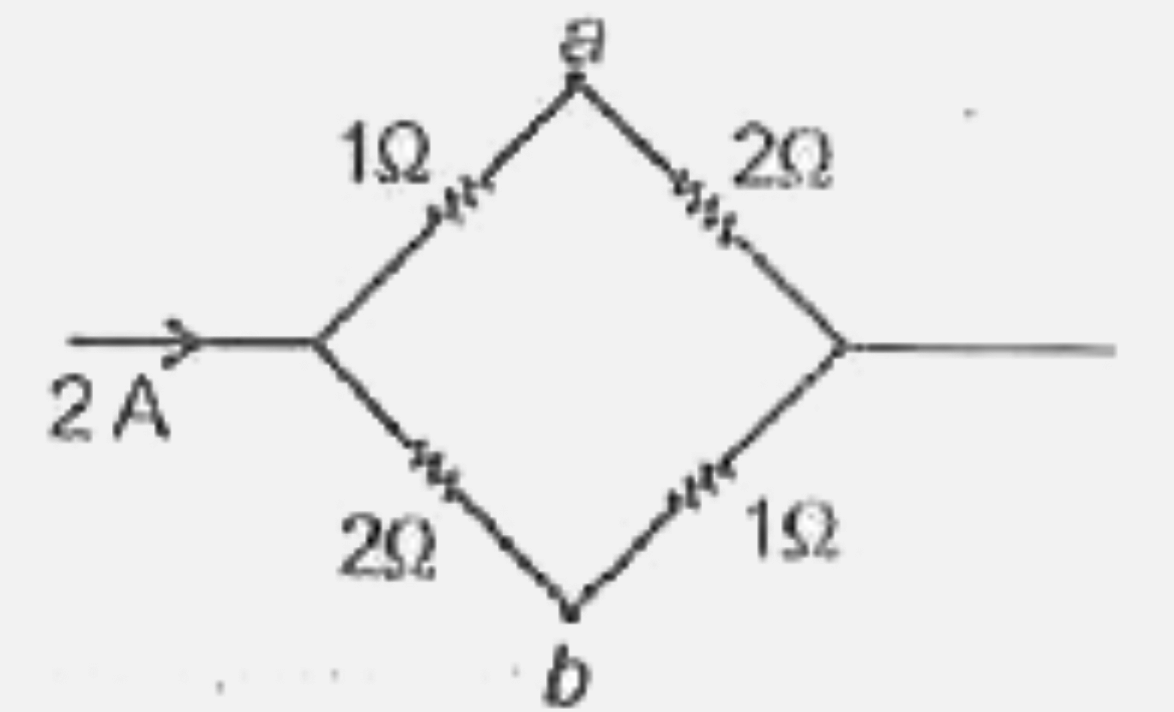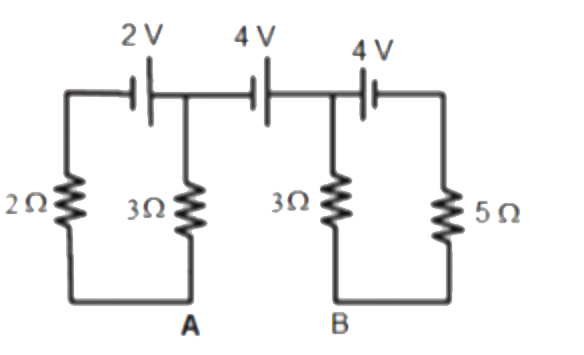The potential gradient along the length of a uniform wire is 20 volt/metre. B and C are the two points at 40 cm and 70 cm point on a meter scale fitted along the wire. What is the potential difference between B and C?
6V
0.4 V
0.6 V
4 V
The correct Answer is:A
To find the potential difference between points B and C on a uniform wire, we can follow these steps:
Step 1: Understand the given information
We know that the potential gradient (V/g) along the wire is 20 volts per meter. This means that for every meter of length, the potential changes by 20 volts.
Step 2: Identify the positions of points B and C
Point B is located at 40 cm (0.4 m) and point C is located at 70 cm (0.7 m) on the meter scale.
Step 3: Calculate the distance between points B and C
To find the distance between points B and C, we subtract the position of B from the position of C:
Distance (d)=Position of C−Position of B
d=0.7m−0.4m=0.3m
Step 4: Use the formula for potential difference
The potential difference (V) between two points in a uniform electric field can be calculated using the formula:
V=Potential Gradient×Distance
Substituting the values we have:
V=20V/m×0.3m
Step 5: Calculate the potential difference
Now, we perform the multiplication:
V=20×0.3=6V
Conclusion
The potential difference between points B and C is 6 volts.
---
We know that the potential gradient (V/g) along the wire is 20 volts per meter. This means that for every meter of length, the potential changes by 20 volts.
Point B is located at 40 cm (0.4 m) and point C is located at 70 cm (0.7 m) on the meter scale.
To find the distance between points B and C, we subtract the position of B from the position of C:
Distance (d)=Position of C−Position of B
d=0.7m−0.4m=0.3m
The potential difference (V) between two points in a uniform electric field can be calculated using the formula:
V=Potential Gradient×Distance
Substituting the values we have:
V=20V/m×0.3m
Now, we perform the multiplication:
V=20×0.3=6V
The potential difference between points B and C is 6 volts.
Similar Questions
The potential difference between points A and B is

View SolutionThe potential difference between points A and B is

View SolutionThe potential difference between points A and B is

View SolutionFind theh potential difference between points a and b.

View SolutionFor the circuit in find the potential difference between points a and b.

View SolutionIn given circuit , the potential difference between points A and B is

View SolutionWhat is meant by saying that the potential difference between two points is 1V ?
View SolutionWhat is the potential difference between points A and B in the circuit shown?

View SolutionExplain the statement 'the potential difference between two points is 1 volt'.
View SolutionIf 100 volts of potential difference is applied between a and b in the circuit of , find the potential difference between candd.

View Solution
